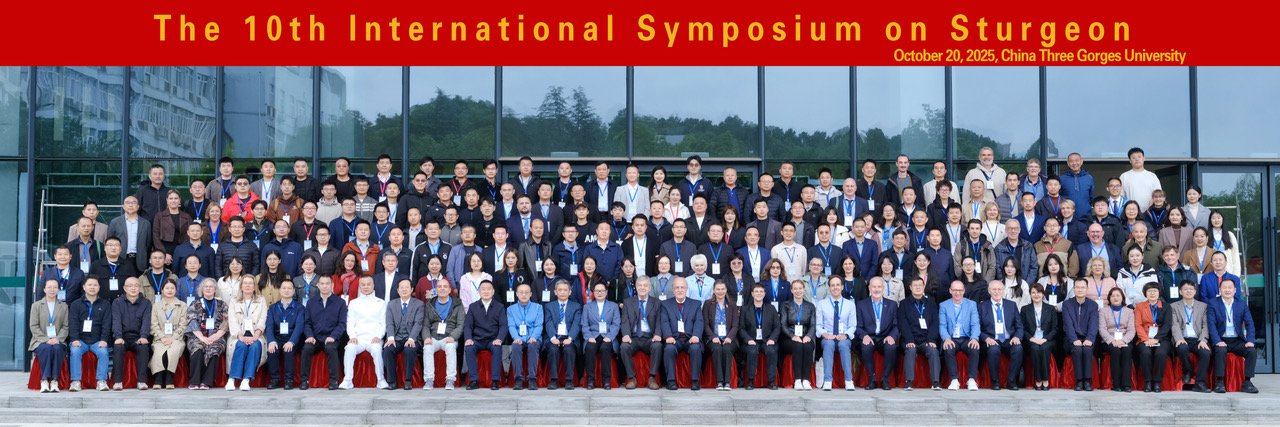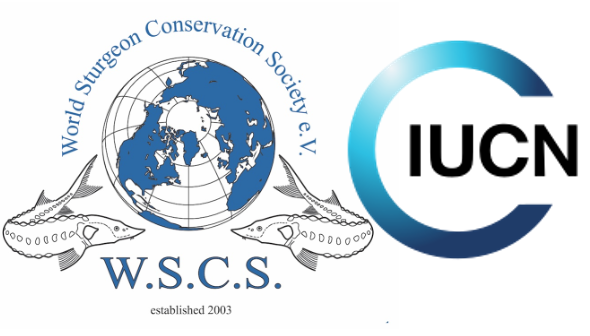
Summary report on the 10th International Symposium on Sturgeon held October 19-24th in Yichang, China
The International Symposium on Sturgeon (ISS) is a global forum in the field of sturgeon research. In 2017, during the 8th International Sturgeon Symposium (ISS8) in Vienna, Austria, the WSCS Council unanimously approved China’s bid to host the 9th International Sturgeon Symposium (ISS9) in 2021. Unfortunately, ISS9 was cancelled due to the COVID-19 pandemic. The 10th International Symposium on Sturgeon, co-organized by Wuhan University and the World Conservation Society, was held under the auspices of, the Ministry of Agriculture and Rural Affairs, the Fisheries Bureau of the Ministry of Agriculture and Rural Affairs, the Yangtze River Fisheries Administration Office of the Ministry of Agriculture and Rural Affairs, the Department of Agriculture and Rural Affairs of Hubei Province, and the Yichang Municipal People’s Government.
Under the conference motto “Ensuring a shared future for humans and sturgeons,” the symposium featured up to three parallel sessions covering five key areas.A total of 168 participants from 16 countries contributed 65 presentations and 40 posters to the program that comprised contributions in the fields of General Biology and Ecology of Acipenseriformes; Human Impacts & Mitigations which incorporated global climate change and species survival; Applied Research & Aquaculture which included recent advances in caviar production. Plenary speakers covered a broad range of topics including a summary of sturgeon conservation activities from the past three decades, ongoing recovery actions and associated results for both the Yangtze sturgeon (Acipenser dabryanus) and Chinese sturgeon (Acipenser sinensis), an update on global caviar production, and an overview of adaptive management in decision making for sturgeon recovery.
The General Biology and Ecology sessions addressed a wide scope of topics ranging from genetic assessments with a focus on genome sequencing and its applications in phylogenetic approaches, selection and fitness related traits, to cellular responses upon stressors, individual response to environmental cues and toxicological experiments, drivers for habitat selection and population response to environmental drivers to population responses of hatchery origin fish under natural conditions. The most extreme preservation techniques were focusing on tissue banks and subsequent use of the genes in host species applying Crisper/Cas approaches.
The sessions on Applied Research & Aquaculture focused on the mediation and prevention of adverse impacts, such as pathogens, and their diagnosis using non-invasive methods (e.g., ultrasonography); medication application for fungal infestations; physiological basis for nutrition and its application for growth and caviar production, as well as in the conservation context of ex situ rearing and rearing for release. In a more general setup, market studies and the impacts of cultural heritage on marketing were outlined, as well as alternative utilization of sturgeon products for different target groups in an attempt to improve nutrient availability.
Under the Human Impact and Mitigations topic case studies of recently initiated recovery projects were presented, their basis and the refined objectives for recovery initiatives were provided. The results of assessments of sturgeon populations in different rivers in the Far East, Russia, indicated positive populations trends that were a beam of light in the ever so dominant stories of decline and reproductive failure of populations. Several presentations focused upon the dam induced effects on sturgeon populations, trying to disentangle various adverse impacts. Bycatch was one of the dominant topics being addressed in the context of population recovery with regard to its importance and mitigation strategies. A recurring topic also in the Human Impacts session was the role of habitat and habitat alterations for the functionality of self-sustaining populations. Results from restoration projects presented will help to improve restoration attempts in the future.
Four workshops focused on: Sturgeon sex Identification and gonadal staging; sturgeon swimming behavior and related eco-hydraulics; field survey methods and habitat assessment for sturgeon; and an IUCN Sturgeon Specialist Group meeting that had focused discussions on the upcoming Red List Reassessment due in 2029, caviar labelling, and a recently proposed taxonomic change in Acipenserids.
The aim of the conference was to raise broader awareness of the challenges sturgeons are facing, such as habitat degradation and bottlenecks to recovery, in order to help facilitate global solutions to address population declines and risk of extirpation. At the same time, it was intended to contribute positively to sturgeon aquaculture and sustainable development. A call for proposals to host the upcoming 11th International Symposium on Sturgeon (ISS11) will be posted soon.
Special thanks are extended to the organizers and volunteers whose efforts ensured the success of the symposium.
Better quality group photo here.
The abstracts of all presentations are accessible via the following QR code.






